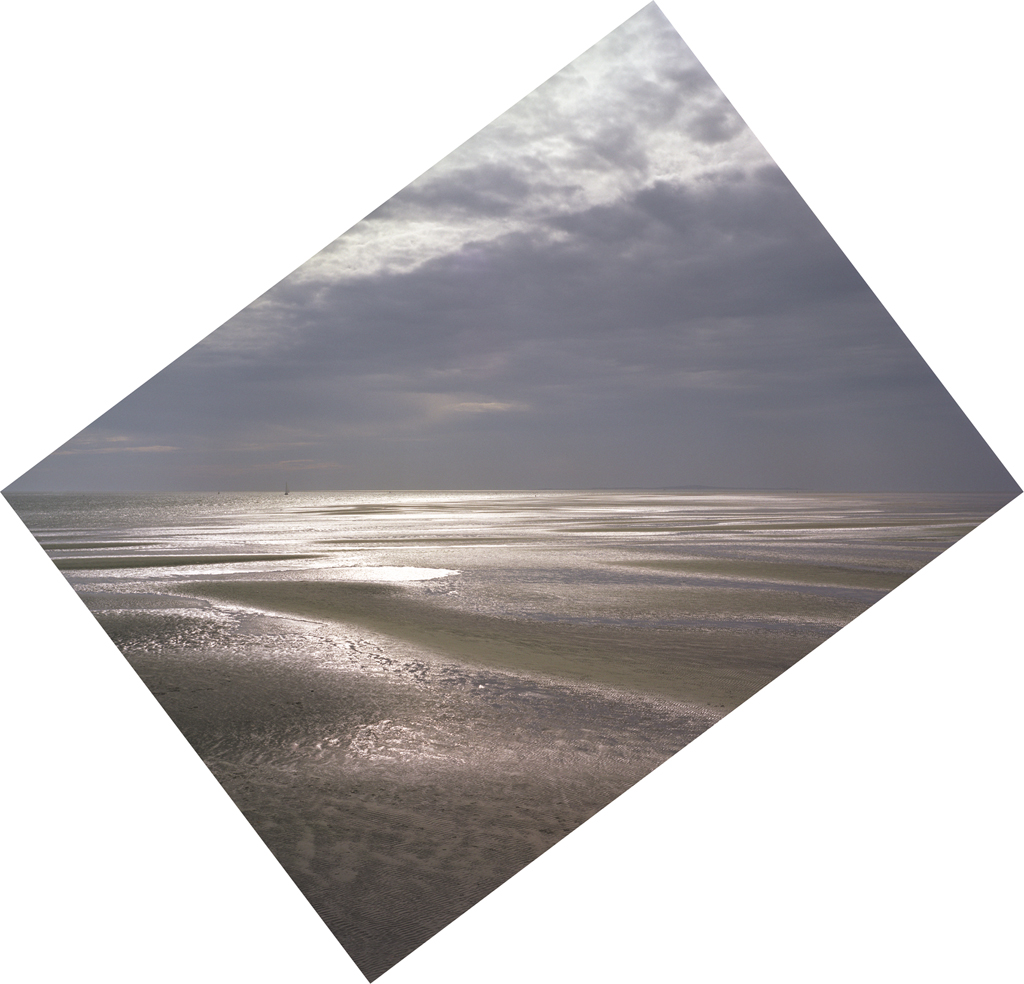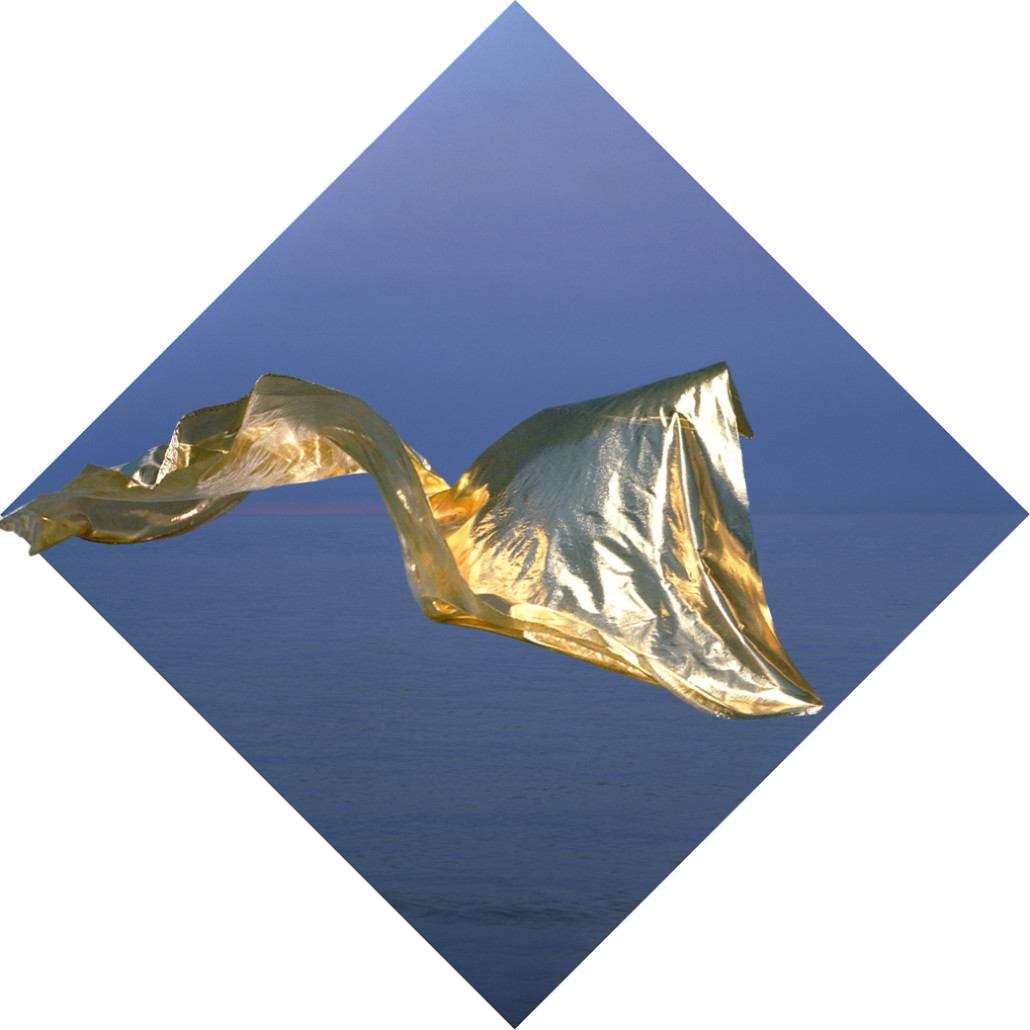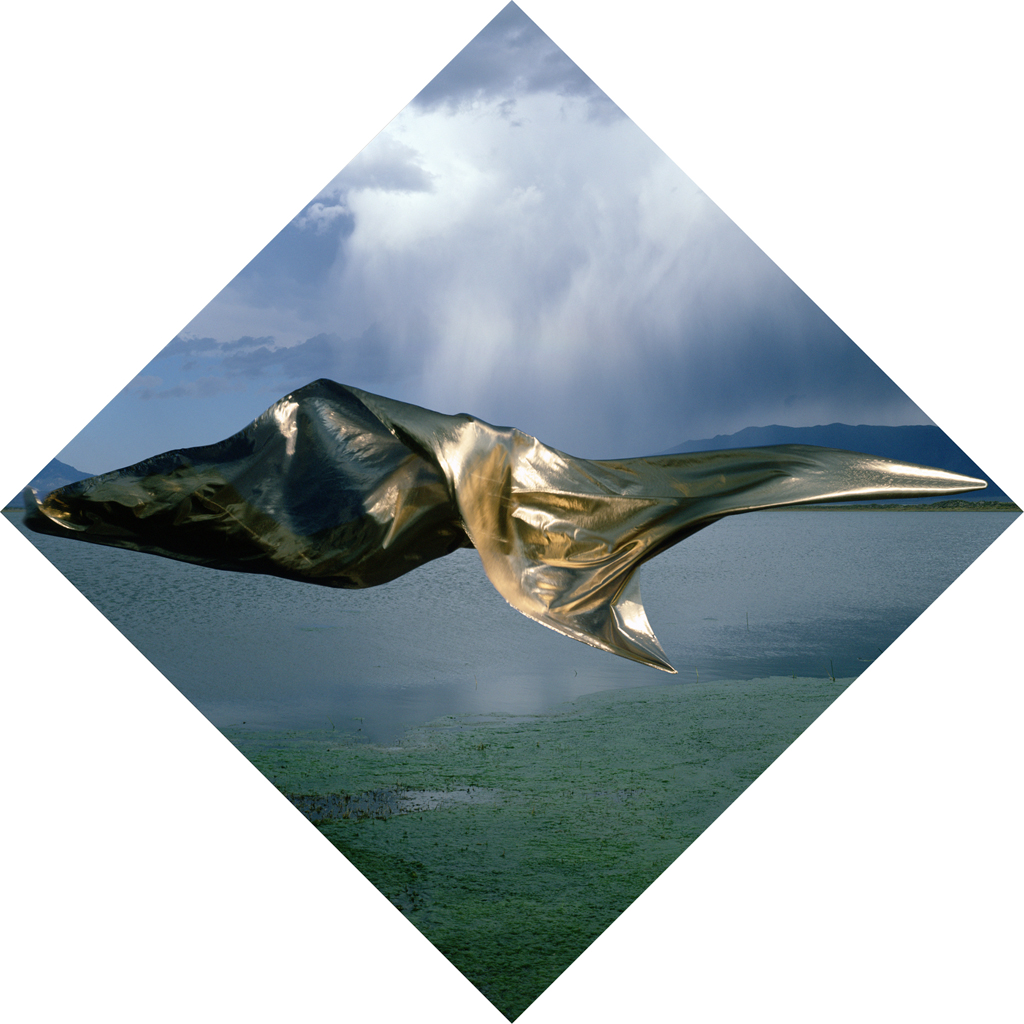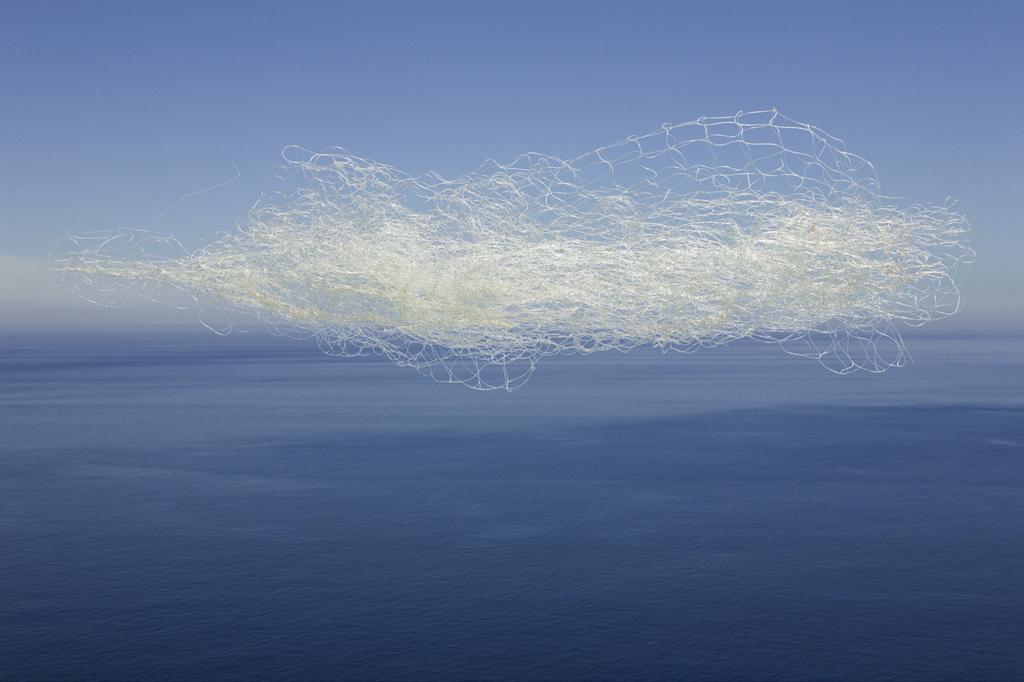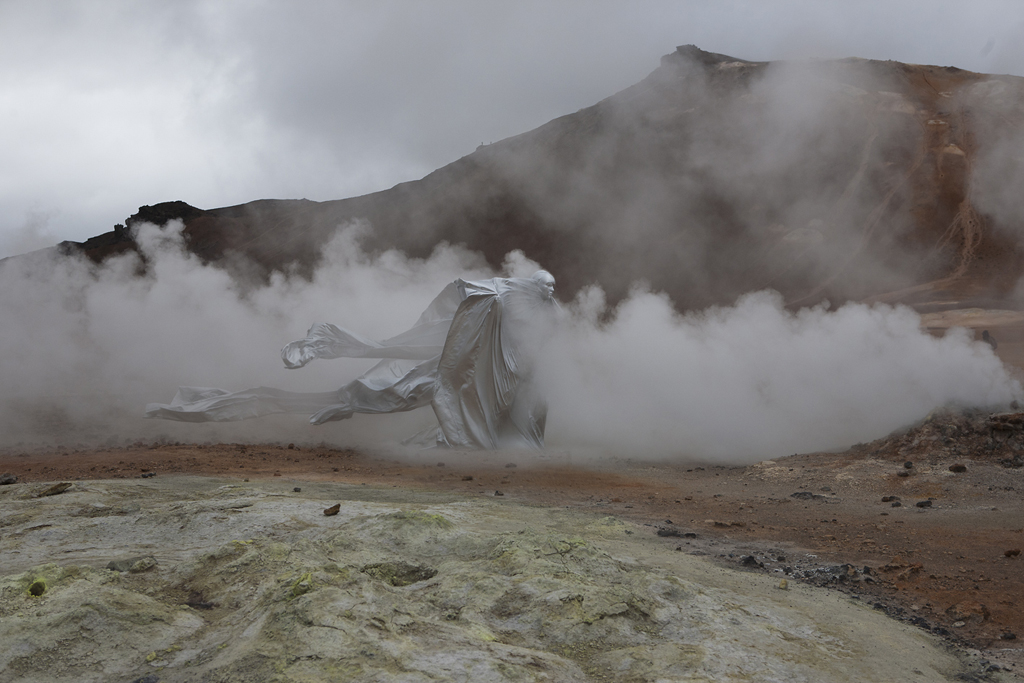Witte Pan, Bonaire, 2001 | ± 135 x 135 cm dibond and perspex | ± 90 x 90 cm archival print | edition 20 pcs
Rond de millenniumwisseling ontstond tijdens een reis naar Bonaire Hansa’s belangstelling voor de horizon als vlakverdeler in een landschap. Dat leverde een thema op voor een grote serie fotowerken. Het was voornamelijk een zoektocht naar landschappen die de mogelijkheid boden in hun kleurenvarianten een soort kant en klare penseelstreek vast te leggen. Hierdoor ontstond een vorm van fotografie die de schilderkunst benaderde. Dit effect werd nog eens versterkt door de opvallende gekantelde vorm, bedoeld om de toeschouwer geconcentreerder te laten kijken.
Around the turn of the millennium, during a trip to Bonaire, Hansa became interested in the horizon as a divider in a landscape. That provided a theme for an extensive series of photographic works. It was primarily a search into landscapes that offered the possibility of capturing their colour variations in a kind of ready-to-use brush stroke. This created a form of photography almost similar to painting. The effect was enhanced by the striking, tilted form and encouraged a more concentrated gaze from the spectator.
Spathoek, Terschelling, 2004 | ± 144 x 150 cm dibond and perspex | ± 64 x 67 cm archival print | edition 20 pcs
De zoektocht naar de horizon als vlakverdeler werd een reis die door verschillende landen en continenten voerde. Na Bonaire volgden de Wadden, Italië en later Australië en Noord en Zuid Amerika.
The search for the horizon as a surface divider turned into a journey through different countries and continents. After Bonaire followed the Wadden, Italy and later on Australia and North and South America.
Cape Saar, Domburg, 2005 | ± 135 x 135 cm dibond and perspex | ± 60 x 60 cm archival print | edition 20 pcs
Later voegde Hansa doeken toe aan het werk met het idee om het landschap geheel of gedeeltelijk te verbergen, geïnspireerd door de Venetiaanse meester uit de 18e eeuw Tiepolo. Door de speling van de wind werden de doeken op zich echter op zich ook weer heel interessante vormen.
Inspired by the Venetian master Tiepolo of the 18th-century, Hansa later added floating cloth shapes to his paintings with the intention to fully or partially hide the landscape. However, the wind twisted cloths became in themselves, very interesting shapes.
Lake San Louis, Colorado, 2006 | ± 135 x 135 cm dibond and perspex | ± 60 x 60 cm archival print | edition 20 pcs
In deze foto ontstaat een schilderachtig effect door de kleuren van het landschap en de structuren in het water die bijna als verftoetsen lijken te fungeren. De zwevende doek verbergt een deel van het landschap maar lijkt tegelijkertijd de vormen hiervan ook te herhalen waardoor een magisch realistisch effect ontstaat.
In this photograph the colours of the landscape and the structures in the water create a painterly effect. They almost seem to act like brush strokes. The floating cloth hides a part of the landscape but at the same time seems to repeat its shapes resulting in a magic realistic effect.
Therenian Sea, Sardinia, 2010 | 90 x 135 cm dibond and perspex | 40 x90 cm archival print | edition 20 pcs
De visnetten langs de kusten van Italië bevrijdden Hansa van het rigide regiem dat hij zichzelf had opgelegd. Door de speelse vormen van de netten werd ook langzamerhand toegewerkt naar het gebruik van de menselijke figuur zoals te zien is in Sphinx, Texel, 2013.
The fishnets along the coasts of Italy freed Hansa from the rigid regime he had imposed on himself. Beginning with the playful shapes of the nets, he gradually started incorporating the use of the human shape; as can be seen in Sphinx, Texel, 2013.
Sphinx, Texel, 2013 | 90 x 135 cm dibond and perspex | 40 x90 cm archival print | edition 20 pcs (1 x verkocht)
Hvertjal 1, Iceland, 2014 | 90 x 135 cm dibond and perspex | 40 x90 cm archival print | edition 20 pcs
Hvertjal 2, Iceland, 2014 | 90 x 135 cm dibond and perspex | 40 x90 cm archival print | edition 20 pcs


